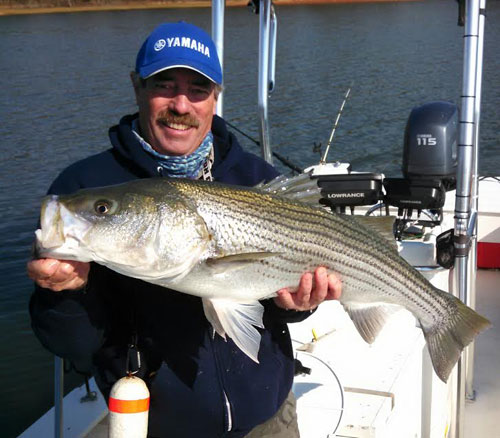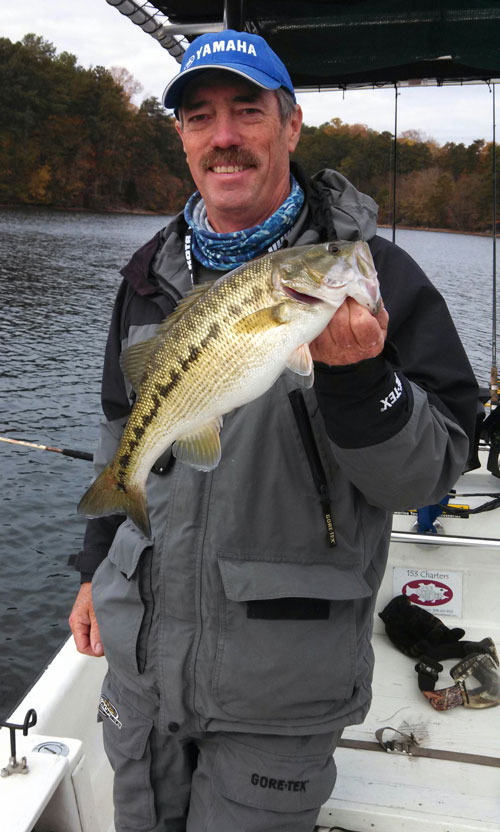
This month, I wanted to bring up a topic that has caused a lot of discussion in forums and articles, but one that will always be with us. It concerns the introduction of non-native fish into our lakes and streams. Here in Fontana, we have one of the most beautiful lakes anywhere in the world. Surrounded by mostly state and federal land it has the least development of almost any lake I have ever been on. There is a really large threadfin shad population that has historically fed masses of primarily walleye, white bass and smallmouth bass. Over forty years ago, when I first started fishing Fontana as a student at Western Carolina, the locals told me about the pike run, the white bass run, and lizard fishing for smallmouth. Springtime was when you fished mainly the rivers after the spawning runs, and you fished mainly with crawlers on the banks for pike (walleye) until they left the bank. As summer rolled on, you night-fished under Coleman lanterns and caught walleye, crappie, whites and catfish. When the baseball playoffs came on, the whites could be counted on to, once again, fill the rivers as the shad found refuge in the moving water upriver. Clocks could be set by the surfacing explosions of huge schools of whites smashing pods of shad, it was a sight to see and, like I said, as regular as clock work.

The Fontana we have now is a totally different Fontana than it was forty years ago, for the above-mentioned reasons. While there is still a huge threadfin population they are much more spread out, broken up by pods of aggressive spots. No one knows exactly what effect the bluebacks will have on Fontana as they become established, but one thing is very well documented, it will continue to increase the demise of the walleye population. Spots should benefit with the greater size of the bluebacks as a new forage base, known as an open water species, which you could also include as spot territory, which is also one more fish that likes that openness.
Now, after all this info on changes because of introduced species, you may think I am totally against adding any more species to the mix, but that’s exactly what I am proposing. The facts on the ground are that number one, this is not the Fontana of forty years ago. The lake is not dominated by walleye and smallmouth as it was in the past. You only have to look to our south at Lanier to see what is coming. There, the bluebacks are well established, the threadfins are well established and they have one of the premier spot fisheries in the US. They also have some of the best striper fishing in the southeast. The lakes have many similar features: deep, clear, cold water, long river runs coming in, clay banks, rock cliffs, just a whole lot more boat traffic. I would like to see our state stock fingerling stripers into the Tuckaseegee below the Cullowhee dam, with some brood fish mixed in, and lets see if there can be a self sustaining population at Fontana. I know they will eat some of the trout in the lake (they love trout), but have miles of trout water to forage in upstream of the lake and I don’t know a soul who wouldn’t want to hook a 10-15 lb striper on a flyrod, if only for a momentary run into the backing. Fontana is changing, it has already changed, we need to let go of the idea that invasive species are all bad; they are, in fact, now the new reality. They are here to stay. The bluebacks will be more and more prevalent and that would be just fine with a new striper population.
Hiwassee is now being stocked with stripers after a new state record striper was caught there. I don’t know why our state ignores Fontana like a “redheaded stepchild”, but they do. There is much to be gained by stocking stripers, they will hold down the blueback explosion that is coming which, by the way, will decimate the walleye population even more, just ask Glenville fishermen. Many folks want to striper fish. They are the most exciting freshwater fish alive. I am sad that Fontana has changed, there is nothing like a walleye filet on the table, but it has and we need to face the fact that more change is coming with the herring. Lets go ahead and get ready, open up new, exciting fisheries, let go of some of the old ideas, and keep Fontana the most wonderful of God’s gifts to us.